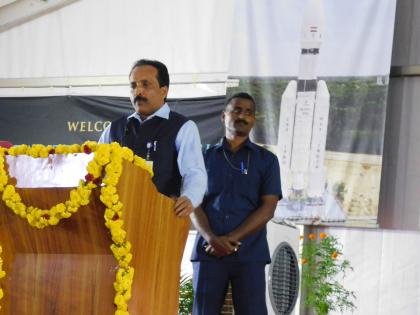"Chandrayaan is a made-in-India craft. People should support and encourage us in planning such missions": S.Somanath, Chairman ISRO
By Anubha Jain | Updated: August 24, 2023 10:56 IST2023-08-24T10:55:25+5:302023-08-24T10:56:35+5:30
"The project has achieved most of the landing conditions for soft landing. The velocity was far less than 2 ...

"Chandrayaan is a made-in-India craft. People should support and encourage us in planning such missions": S.Somanath, Chairman ISRO
"The project has achieved most of the landing conditions for soft landing. The velocity was far less than 2 meters per second and we were confident about the success of the project. We are excited 14 days from now. As the PM said it is the future scientific exploratory mission. Every school, child, village, and mohalla is excited about the showcasing of the landing videos and the success of this mission." This was stated by the ISRO chairman S. Somanath at a press conference after a successful soft landing of Chandrayaan 3 on the moon today at Peenya ISRO Centre in Bengaluru. When asked what will be the next initiation after this great success, the Chairman said that many projects have lined up. When Anubha Jain, Representative Lokmat asked about the challenges faced while achieving the mission he said that the first critical step was launch then landing and capturing of the moon. If the calculations were missed then there would be no mission. And that was a great challenge for us. After spending so many days spent with the mechanism and the orbit the second challenge was the separation of the lander and the orbiter. He further said, "It was a tough journey going to the moon and landing on the moon. It was a difficult task to achieve for any nation despite the advancement of technology. In just two missions we achieved this. The first mission of Chandrayaan 2 had a narrow miss but after four years today, we have landed on the moon so confidently. This confidence to configure missions to go not only to the moon, going to Mars, maybe in the future going to Venus, and sometimes thinking to go beyond these planets, asteroids. Should think about it! People should support and encourage us in planning such missions.
When Chandrayaan 2 was so closely missed, that was a painful moment for all of us. Most of the team members in Chandrayaan 2 are today with us in the Chandrayaan 3 mission. We all have gone through agony, pain, and fear. We did not sleep for so many years. Most of the senior retired members sat with us, guided and mentored us and how we could improvise this mission, many brainstorming sessions we have gone through. Those are unsung heroes today who are not with us," he added. When asked about how cost-effective the mission was the Chairman laughed and said that all secrets can not be revealed, otherwise will be copied by others. While answering who all helped to achieve this mission Somanath said that for project and mission design the USA NASA team, support from colleagues from other scientific organizations from INDIA, Australia’s ground station in Canberra, UK, and again the NASA control team supported in the proper placing of Chandrayaan 3 in the orbit. In the end, he said that the technology used in the Chandrayaan 3 is no less complex than any other technology that goes to the moon. It is one of the best and most complex technologies we have used. ISRO system center has designed the camera board, equipment to measure orientation velocity designed by ISRO national center, and the best pockets have been placed in the right orbits; engines made by Liquid Propulsion Systems Centre, ISRO in India. So it’s a made-in-India craft.
Open in app